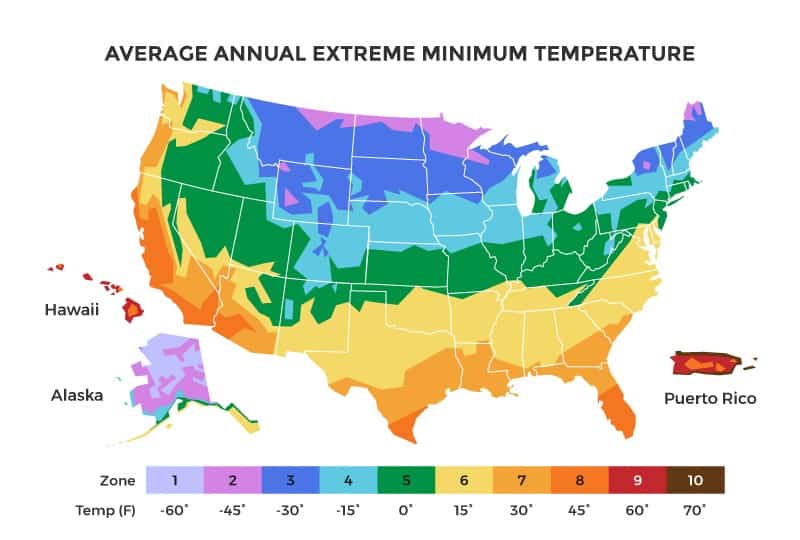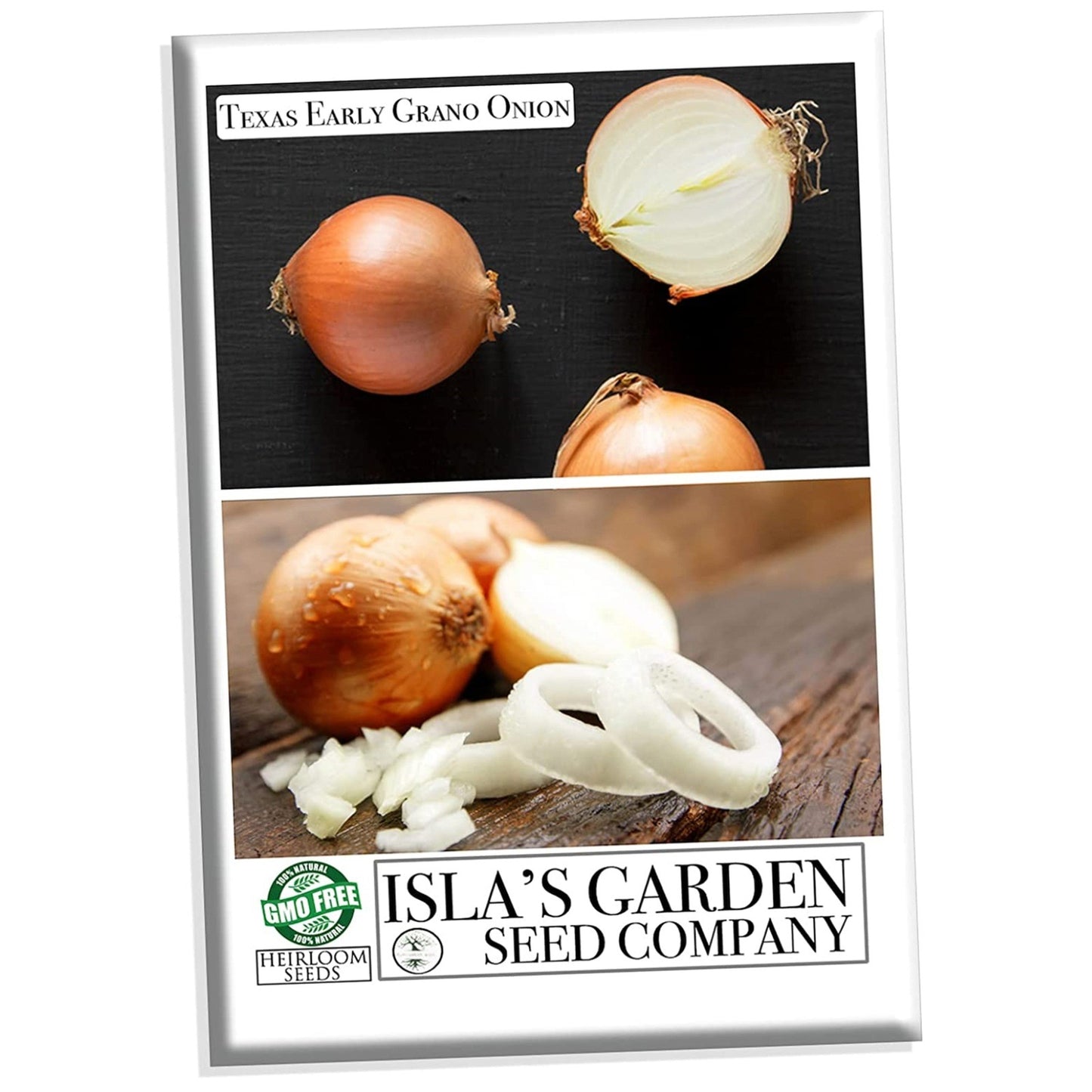
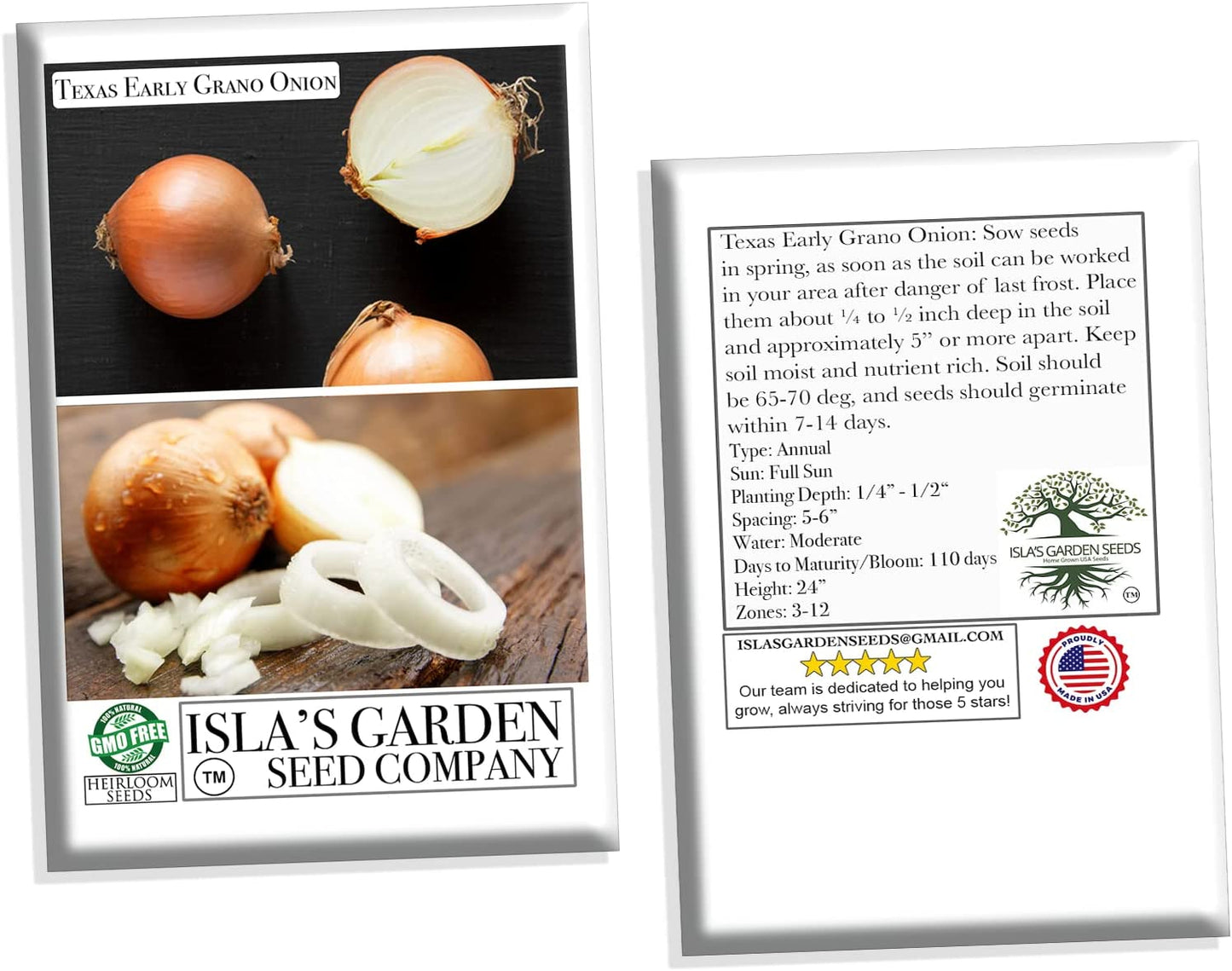
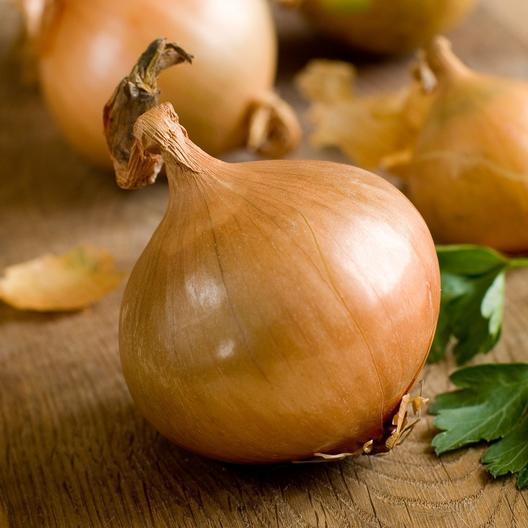
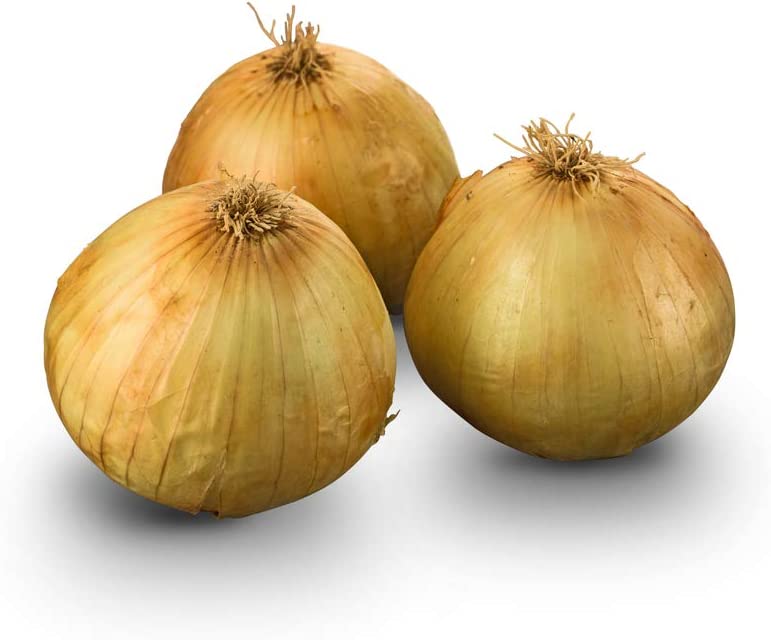
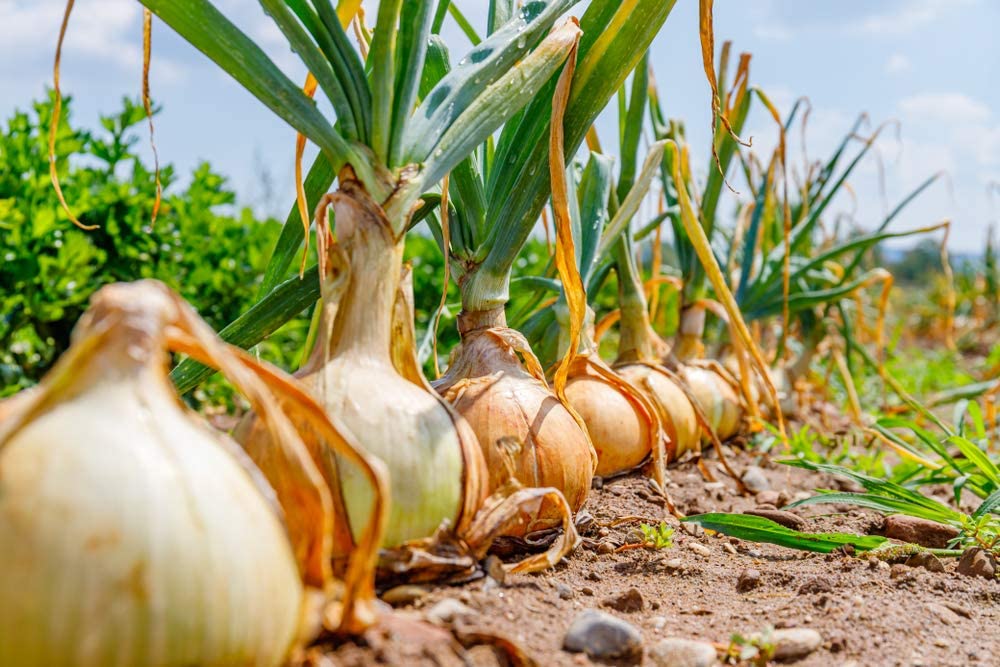
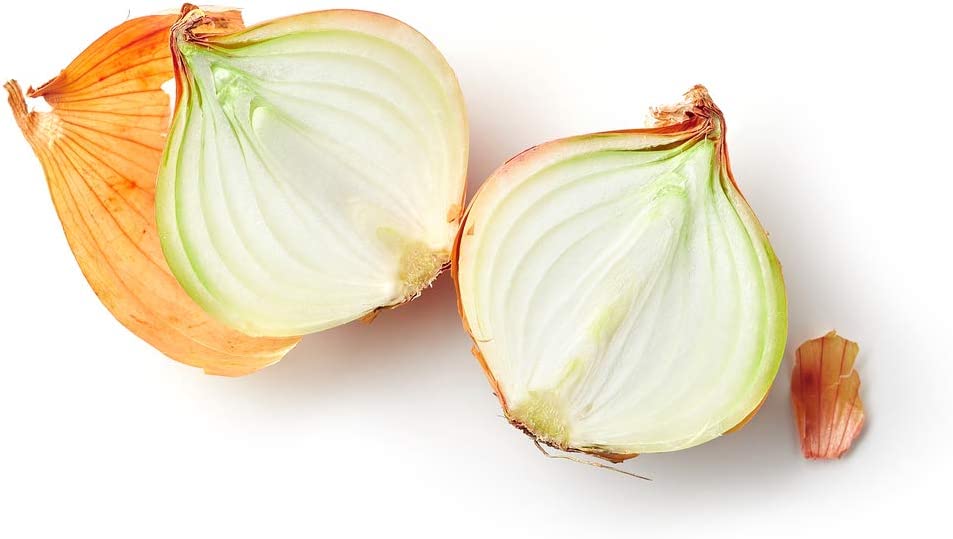
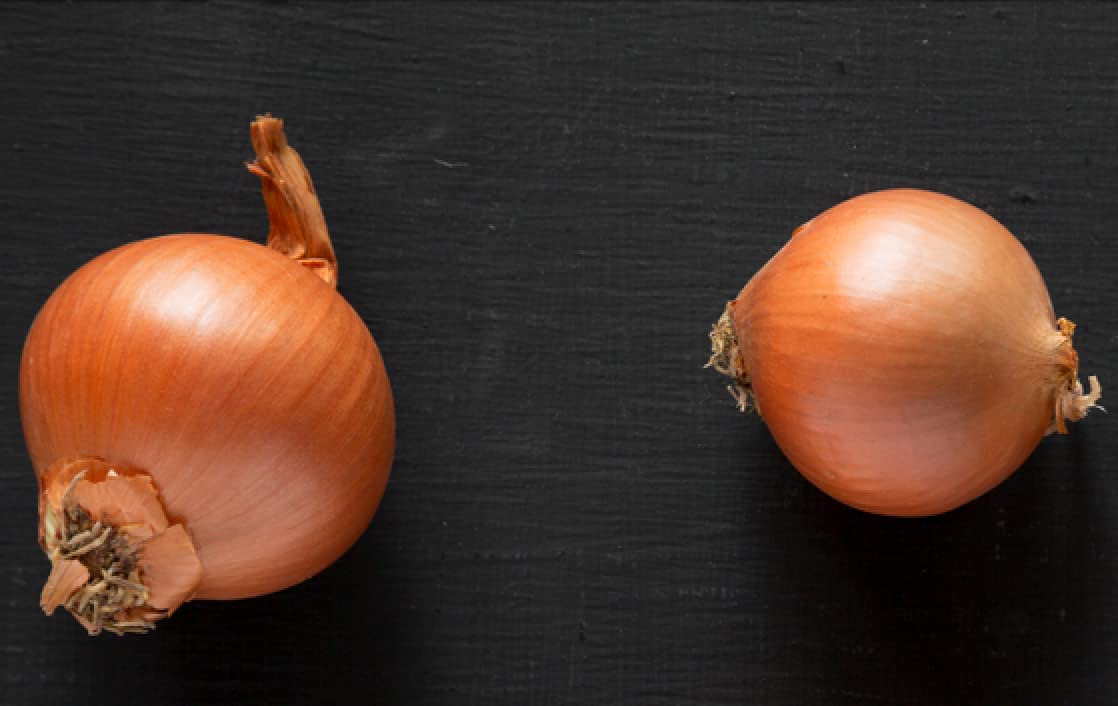

Allium cepa "Texas Early"
Texas Early Grano onions are a type of sweet onion that are known for their mild flavor and large size. They are a popular variety of onion that is grown in the United States, particularly in the state of Texas.
These onions are typically harvested in the spring and early summer months and are known for their sweet flavor and tender texture. They are also known for their size, often growing to be as large as a softball. Texas Early Grano onions have a yellowish-brown skin and white flesh.
One of the reasons why Texas Early Grano onions are so popular is because they are low in pyruvic acid, which is the compound that causes onions to have a pungent taste and makes people cry when they are cut. This makes them a great choice for people who want to enjoy the flavor of onions without the harshness.
These onions are often used in a variety of dishes, including salads, soups, stews, and sandwiches. They are also commonly used in Mexican cuisine, particularly in dishes such as salsa and guacamole.
Overall, Texas Early Grano onions are a delicious and versatile variety of onion that are beloved by many people for their sweet flavor, large size, and mild taste.
Type: AnnualSun: Full
Planting Depth: 1/4”
Spacing: 5-6”
Water: Moderate
Days to Maturity/Bloom: 110 days
Height: 10-12”
Zones: 6-12
Planting Instructions
Type: AnnualSun: Full
Planting Depth: 1/4”
Spacing: 5-6”
Water: Moderate
Days to Maturity/Bloom: 110 days
Height: 10-12”
Zones: 6-12
Approx seeds per order 300
Plant onions in early spring to be harvested in the fall. They have long growing seasons and usually can withstand a light frost.
Start seeds indoors since they need a soil temperature around 50F to germinate. Once it gets warmer outside and the ground can be worked, transplant seedlings outdoors. Space transplants 4-6" apart in rows 12-18" apart. The plants will need about 1" of water per week. Onions are ready to harvest when the tops turn yellow and start to fall over.
Long Day vs. Short Day Onions:
This designation refers to the amount of daylight the onions need during the summer to form bulbs. Onions are sensitive to amounts of daylight and since different parts of the country receive different amounts of daylight during the summer, onions have been bred to accommodate that. An imaginary line was drawn across the United States, stretching from between the border of North and South Carolina to San Francisco. If you live south of that line, plant short day onions. And, if you live north of the line, plant long-day varieties. There are Day-Neutral or Intermediate varieties, as well, which can grow in any location.
USDA Zone Map
